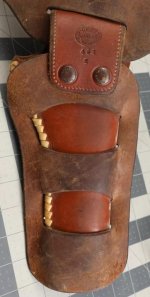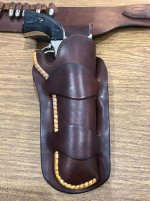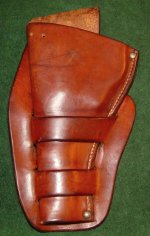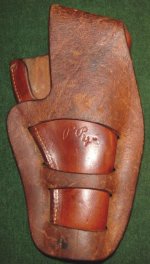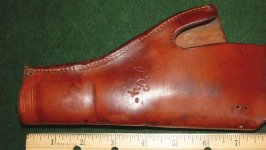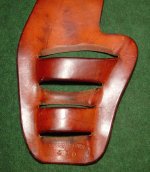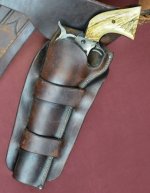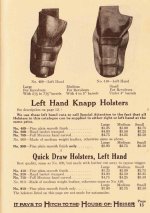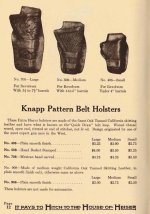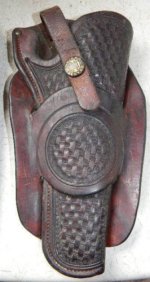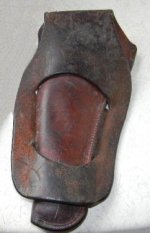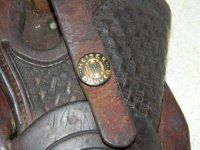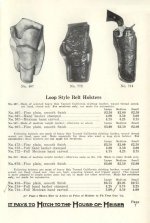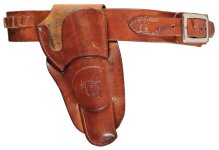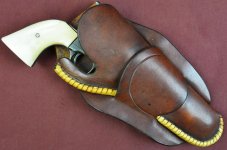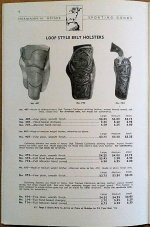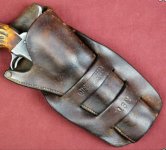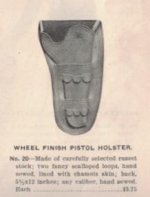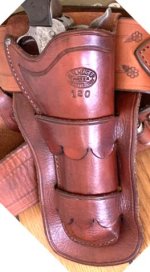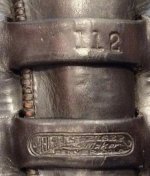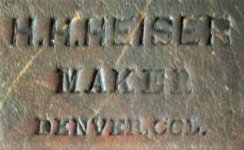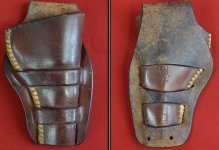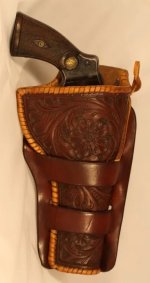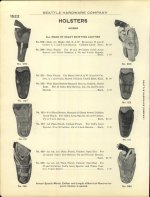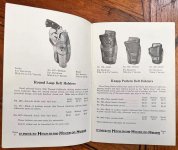It was tempting to start a new thread but instead I'll put this on enne-frame's Heiser thread, meant to be a sort of dictionary of Heiser.
The queries about 'how old is my Heiser' are common enough, and another site (now defunct) had claims about the several Heiser marks' dating. Incorrect assumption as pointed out to me by turnerriver, Heiser collector extraordinaire, early in our relationship as fellow holstorians.
He has complete catalogues for all years, and I have pages from many but covers for all of them, too. And it is there that we learn (1) the earliest styles, and (2) therefor the earliest stamps. The earliest known Heiser catalogue that also contains gunleather (there is an earlier, late 19th century one that has only saddlery) is No. 13 that is 1909; somehow turnerriver and I let No. 12 get away from us when it appeared on an auction site.
Other authors have stated that Heiser went into the gunleather business only after Hermann died in 1904, and it was therefor the sons who did so. The claimed origin was 'two years later' so 1906 but that author (a Keyston Bros executive) filled his article with date errors as proven by older research. So expecting he was at least close, I use 1909 as the gunleather start date (m/b 1907, again we didn't ever see the interior of that catalogue, and no prior catalogues have been sighted except 1895s that is all saddlery).
So: in that catalogue are not only this holster, of which I have an image that uses the 'football' mark, but also the next catalogue that uses the football and this one, too. We know that all the marks coexisted in 1927. Also, there are TWO sizes of the football stamp, one slightly smaller than the other and engraved slightly differently; I have a Heiser set with one on the holster and one on the belt or I'd not ever have known from images that they are sized differently
BUT: there is an even earlier one that is NOT shown in the 1927 collection, that is inconsistently applied as if in several pieces such as linotype in a set of individual handles. I'm operating on the notion that it was in Hermann's time, late 19th century so VERY RARE. The several examples I have of it have the three lines spaced apart differently, and with different alignments centrally.



